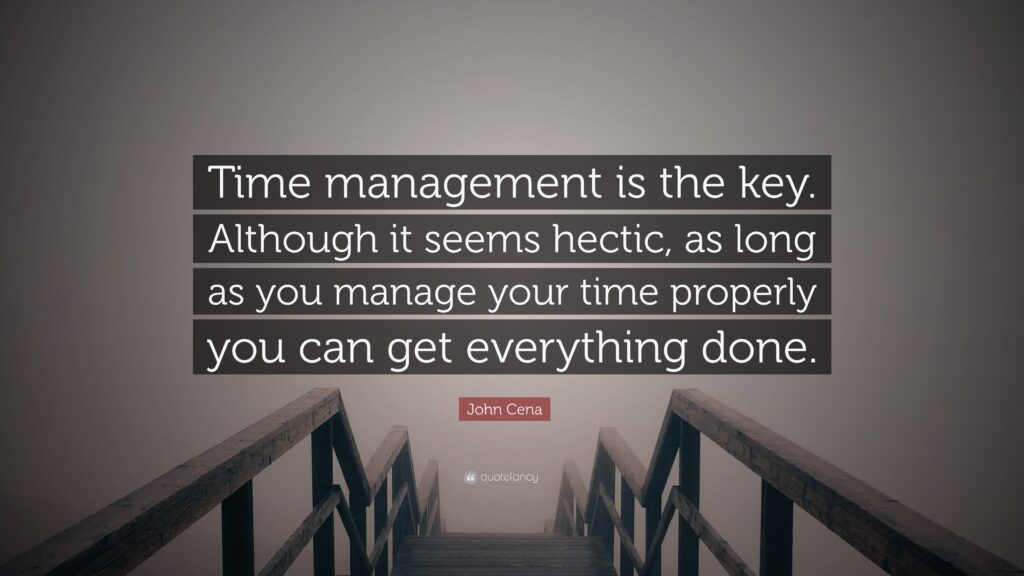The more thought you invest into setting priorities before you begin a task, the faster you will get the important things done. The more important and valuable the task is to you, the more motivated you are to overcome procrastination and launch yourself into the job.
William Matthews said, “The first law of success is concentration – to bend all the energies to one point, and to go directly to that point, looking neither to the right or to the left.”
Today, I want to share a method of time-management for setting priorities that I’ve been using for years, called the ABCDE method.
The ABCDE Method
The ABCDE Method is a powerful priority setting technique that you can use every single day. This technique is so simple and effective that it can make you one of the most efficient and effective people in your field. The ABCDE list is a to-do list on steroids when it comes to learning how to prioritize.
The power of this technique lies in its simplicity because it’s so action oriented.
Here’s how it works: You start with a list of everything you have to do for the coming day. Think on paper. Once you have a list of all of the tasks you must complete, start the ABCDE method.
“A” Items Are Most Important
An A item is defined as something that is very important. This is something that you must do.
This is a task for which there can be serious consequences if you fail to do it. Consequences such as not visiting a key customer or not finishing a report for your boss that she needs for an upcoming board meeting.
These are the frogs of your life.
If you have more than one “A” task, you prioritize these tasks by writing A-1, A-2, A-3, and so on in front of each item. Your A-1 task is your biggest, ugliest frog of all.
“B” Items Only Have Minor Consequences
A B item is defined as a task that you should do. But it only has mild consequences.
These are the tadpoles of your work life. This means that someone may be unhappy or inconvenienced if you don’t do it, but it is nowhere as important as an A task. Returning an unimportant telephone message or reviewing your email would be a B task.
The rule is that you should never do a B task when there is an A task left undone. You should never be distracted by a tadpole when there is a big frog sitting there waiting to be eaten.
“C” Tasks Have No Consequences
A C task is something that would be nice to do, but for which there are no consequences at all, whether you do it or not.
C tasks include phoning a friend, having coffee or lunch with a coworker or completing some personal business during work hours. This sort of activity has no effect at all on your work life.
As a rule, you can never complete a C task when there are B or A tasks left undone.
“D” For Delegate
A D activity is something that you can delegate to someone else.
The rule is that you should delegate everything that you possibly can to other people. This frees up more time for you to engage in your A activities. Your A tasks and their completion, largely determine the entire course of your career.
“E” For Eliminate
An E activity is something that you should eliminate altogether.
After all, you can only get your time under control if you stop doing things that are no longer necessary for you to do.
The key to making this ABCDE Method work is for you to now discipline yourself to start immediately on your “A-1” task. Stay at it until it is complete. Use your willpower to get going on this one job, the single most important task you could possibly be doing.
Eat the whole frog and don’t stop until it’s finished completely.
Spend Your Time On Valuable Activities
Your ability to think through and analyze your work list to determine your “A-1” task is the springboard to higher levels of accomplishment. It also leads to greater self-esteem, self-respect and personal pride.
When you develop the habit of concentrating on your “A-1,” you will start getting more done than other people around you.
Make a rule for yourself to never do anything that isn’t on your list. If a new task or project comes up, write it down on your list and set a priority for it before you start work on it.
If you react and respond to the nonstop demands on your time, you will quickly lose control of your day. You end up spending most of your time on activities of low or no value.
Practice The ABCDE Method
Review you work list right now and put an A, B, C, D, or E next to each task or activity. Select your A-1 job or project and begin on it immediately. Discipline yourself to do nothing else until this one job is complete. It will become one of the best time-management tools you can use.
Practice this ABCDE Method every day and on every work or project list, before you begin work, for the next month. By that time, you will have developed the habit of setting and working on your highest priority tasks. Your future will be assured!
This article was written by Brian Tracy, recognized as the top sales training and personal success authority in the world today. You can follow him on Twitter, Facebook, Pinterest, Linkedin and Youtube.
